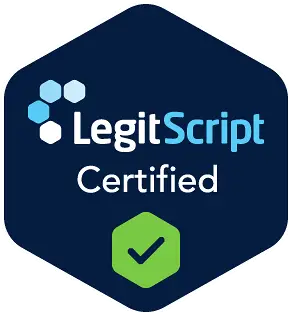OxyContin (oxycodone) withdrawal is an unpleasant and sometimes dangerous process. Learn what happens during OxyContin detox and how it should be done safely.
Key Points
- Withdrawal timeline and severity vary depending on factors such as overall health and how much OxyContin the body is used to.
- Acute withdrawal from OxyContin lasts two to three weeks, but withdrawal effects can be felt for several months.
- Detox from OxyContin should be supervised by a medical professional.
- Different types of programs and methods for OxyContin detox are available.
What Is OxyContin?
OxyContin is a long-acting form of the opioid oxycodone. A Schedule II controlled substance, just like other forms of oxycodone, OxyContin is prescribed for severe pain that requires round-the-clock narcotic medication. Doctors prescribe OxyContin cautiously because, as an opioid, it is possible to become tolerant, dependent or addicted to the drug.
What Is OxyContin Withdrawal?
OxyContin addiction can be difficult to overcome. A major hurdle to quitting OxyContin (the brand name of oxycodone) use is the withdrawal process that comes with it. When the body and brain are used to receiving this drug for a long time, withdrawal symptoms will occur if use is suddenly stopped. OxyContin withdrawal symptoms are unpleasant and can be very dangerous, sometimes even fatal. This is why OxyContin detox should always be done under the supervision of a medical professional.
Related Topic: Oxycodone Addiction
Treatment Can Be Life Changing. Reach out today.

What Causes OxyContin Withdrawal?
OxyContin affects the neurons in the brain. These brain cells have specific receptors, called opioid receptors, that OxyContin and other opioids bind to. When OxyContin binds to these receptors, it triggers the release of a neurotransmitter called dopamine. The dopamine release causes feelings of euphoria and a reduced feeling of pain.
When continuous OxyContin use occurs over time, the brain and body become used to having OxyContin and extra dopamine in the system. When OxyContin is taken away, the body has to readjust how brain and nerve signaling occurs. Additionally, the resulting drop in dopamine causes a number of unpleasant and even hazardous effects on the nervous system. This can make quitting OxyContin very challenging and even dangerous if not done properly.
Related Articles About OxyContin
What Are the Symptoms of OxyContin Withdrawal?
Withdrawal starts when a person stops consuming OxyContin. OxyContin withdrawal causes several physical and mental effects. Although OxyContin withdrawal is rarely fatal, complications like dehydration can be very dangerous, even deadly, if not treated properly. Because of this, someone undergoing OxyContin withdrawal should be seen by a medical professional to ensure they get the right care for managing withdrawal symptoms.
- OxyContin withdrawal causes several effects throughout the body. Physical symptoms of OxyContin withdrawal include increased pain, trouble sleeping or insomnia, nausea or vomiting, diarrhea, abdominal cramping, sweating, fever, runny nose, drowsiness, tremors, goosebumps and dilated pupils.
- People who have developed a physical dependence on OxyContin may especially be troubled with increased pain when they stop using the medication.
- Long-term use of OxyContin has a lasting impact on the brain. When OxyContin use suddenly stops, the central nervous system goes through a change in how it sends neurotransmitter signals. This can result in several psychological withdrawal effects, including agitation and anxiety.
How Does OxyContin Affect the Brain?
OxyContin works on the opioid receptors of the brain and spinal cord. These opioid receptors are involved in pain perception, and activating them blocks feelings of pain. OxyContin can also affect the brain’s reward center, leading to a surge of feel-good chemicals like dopamine. These feelings can compel you to keep taking the medication even when not medically necessary, leading to tolerance, dependence, abuse and addiction.
Related Topic: Oxycodone Withdrawal
OxyContin Withdrawal Timeline
OxyContin is a controlled-release formulation of oxycodone, meaning it works as a long-acting opioid that affects the body over many hours. Withdrawal from long-acting opioids like OxyContin lasts longer than withdrawal from short-acting opioids like heroin.
OxyContin withdrawal symptoms timelines differ from person to person but generally follow a similar trend of side effects of OxyContin withdrawal.
Typically, the first symptoms of OxyContin withdrawal begin within 30 hours after its last use. After that, withdrawal symptoms usually last somewhere around 10 days.
After this initial withdrawal phase, there can be lingering withdrawal effects for weeks or months. During this time, people will be in poorer health overall and may experience strong cravings for OxyContin or other opioids.
1–2 Days After Last Dose
As the drug first begins to leave the brain and body, OxyContin withdrawal generally starts on the first day. These symptoms occur as a result of the loss of opioid receptor stimulation in the locus coeruleus. These first few days are when a person is most at risk for experiencing a setback because of cravings, which instigate a person to return again and again to the drug.
3–8 Days After Last Dose
During the next few days, the loss of inhibition within the locus coeruleus becomes even more pronounced as more and more norepinephrine is released. As the body continues to detox from OxyContin, it will experience some of the worst and hardest physical symptoms of withdrawal, which peak during this period.
8–10 Days After Last Dose
Over the next few days, the physical withdrawal symptoms from OxyContin will begin to disappear, but the psychological withdrawal symptoms like anxiety and depression may linger along with insomnia. This switch occurs because your body has rid itself of OxyContin and is dealing with the rebound effects of the drug no longer being in the brain.
10 Days and Longer
At this stage, OxyContin has left the body, and the majority of the physical withdrawal symptoms will have ended. But, the psychological effects may continue for the next few weeks or months. Experiencing guilt is often common during this time. Cravings for OxyContin can also still occur long after the drug is out of the system. It is important during this time to have a strong support system to avoid relapse. Seeking counseling or other forms of professional help during this time may also be necessary to cope with the psychological effects of OxyContin withdrawal and detox.
Seeking Help for OxyContin Abuse?
Whether you’re calling for yourself or a loved one, our Recovery Advocates are here to help. We are ready and waiting to answer your questions, and there’s no pressure to commit to treatment until you’re ready.
FAQs About OxyContin Withdrawal
Can you die from OxyContin withdrawal?
Although deaths from OxyContin withdrawal are extremely rare, diarrhea and vomiting can cause the body to lose a lot of water in a short period of time. When this happens, blood pressure drops dramatically, and its sodium content becomes very concentrated. Ultimately, this can lead to cardiac arrest or heart failure. This is much more likely in cases where OxyContin is quit cold turkey, and it is also why it is very important to have medical help when undergoing OxyContin detox.
What factors affect the OxyContin withdrawal timeline?
The duration of OxyContin withdrawal symptoms varies depending on several factors. Factors that can affect how long OxyContin withdrawal lasts include how much OxyContin a person was used to taking, how slowly the drug is tapered off, overall health, physical exercise and exertion (which can make withdrawal last longer) and other medications or drugs a person is or was taking.
How long does OxyContin stay in your system?
How long OxyContin stays in your system depends on where you look in the body. Typically, OxyContin is detectable in blood samples for up to six hours after using the drug. How long does OxyContin stay in your urine? When measuring urine samples, OxyContin is typically detectable for about three days. Although the drug does not stay in the system for very long, the effects of OxyContin withdrawal last much longer.
How long does it take to detox from OxyContin?
Detox from OxyContin takes different amounts of time for each person. Most people take somewhere around 10 days to fully detox from OxyContin and get past the acute withdrawal phase. When signing up for a detox program, it will take two or three weeks to get through detox before continuing into the rest of the recovery.
Finishing detox doesn’t mean recovery, however, since cravings can still persist for many months afterward.
Coping Strategies for OxyContin Withdrawal Symptoms
OxyContin withdrawal can not only be physically taxing but also psychologically taxing. As a result, self-care is extremely important. When withdrawing from OxyContin, you should make caring for yourself a priority so your body and mind both get the care and comfort they need during this challenging time. Coping strategies include:
- Relaxation techniques, including mindfulness and meditation
- Support groups
- Gentle exercise
- Sleep and rest
- Nutrition and hydration
OxyContin withdrawal is best managed by medical professionals who can treat your withdrawal symptoms as they emerge to avoid complications. Medication-assisted treatment (MAT) may be available if medically appropriate to ease your symptoms and help your recovery progress.
Professional vs. At Home Detox
OxyContin withdrawal must always be done under the supervision of a medical professional in order to get timely relief from dangerous withdrawal symptoms. However, there are several methods for OxyContin detox available, depending on a person’s individual case and needs.
Medical Detox
Medical detox from OxyContin is typically done in an inpatient setting. When a patient first arrives at the clinic, detox is usually the first part of an inpatient rehabilitation program. Patients receive round-the-clock care from doctors and nurses and are continually checked on during the process.
Being located in a medical facility, patients undergoing medical detox can receive immediate medical intervention for serious and potentially life-threatening withdrawal symptoms. This makes medical detox by far the safest option for OxyContin withdrawal. People who are in poor health or who were on very high doses of OxyContin should especially consider going through medical detox.
Outpatient Detox
Outpatient detox from OxyContin still involves medical supervision, but patients are not checked into a hospital or other treatment center. Instead, they attend a clinic periodically but don’t stay overnight. These patients are at home for most of the withdrawal process. Outpatient OxyContin detox typically takes longer than inpatient detox.
During clinic visits for outpatient detox, patients receive advice and are evaluated. They are also given any medications they need to taper off of OxyContin or manage withdrawal symptoms. They can return to the clinic as needed if symptoms become severe.
Detoxing at Home
When detoxing from OxyContin from home, patients stay at their own residence or another safe, non-clinical setting for the duration of their withdrawal. The lack of continuous medical care makes self-detox from OxyContin more dangerous than other detox options. People should only attempt home detox if they are otherwise in good health overall and expect only mild or moderate symptoms. They should also have another person available to help them at all times, such as a spouse, family member or close friend.
Home detox from OxyContin should last longer than clinical detox because patients should taper off of OxyContin more slowly. They also need to be prepared to manage the withdrawal symptoms on their own.
To help with the unpleasant effects, here are a few detox home remedies and pieces of advice:
- Wear loose-fitting, comfortable clothing made of absorbent materials
- Drink plenty of fluids
- Eat plenty of healthy foods
- Drink fizzy drinks like sparkling water to help settle the stomach
- Use cool compresses or take a cool bath to help with fever (but don’t place ice directly on the skin)
- Drink tea with relaxing herbs, such as lavender, chamomile or St. John’s Wort
- Avoid caffeine and alcohol
- Take over-the-counter painkillers, such as ibuprofen, acetaminophen (Tylenol) or aspirin
- If nauseous, eat bland foods such as rice, bananas, apples, crackers or toast, and avoid foods that are greasy or high in fat
- Take Imodium to help with diarrhea
- Stick to a regular sleep schedule
- Try taking melatonin to help sleep easier
- Use distraction techniques, such as reading, doing crossword puzzles, watching TV or simply holding a heavy object to distract from negative thoughts, unpleasant feelings or OxyContin cravings
Quitting Cold-Turkey
The symptoms of OxyContin withdrawal become much more severe if the drug is quit cold turkey. In extreme cases, sudden OxyContin withdrawal can cause dangerous cardiovascular problems. This is why gradually tapering off OxyContin is important — the symptoms will be much less severe at any one time.
Medications for Withdrawal Symptoms
Many different medications may be used for withdrawal from OxyContin. Most of these are for managing withdrawal symptoms, such as nausea, diarrhea or cardiovascular effects.
A few medications used during OxyContin detox are for helping wean the body off OxyContin. These interact with the opioid receptors that OxyContin would normally bind to. This can produce similar effects to OxyContin use, reducing the effects of OxyContin withdrawal. Doctors may prescribe these medications as a part of an OxyContin detox program.
Medications prescribed to help detox from OxyContin include:
- Methadone
- Buprenorphine, including Suboxone, Sublocade, Subutex and Bunavail
- Naltrexone (Vivitrol)
Finding a Detox Center
Today, there are many OxyContin detox centers to choose from, and each may use different detox methods than the others. You can choose a program that works best for you or your loved one, depending on your specific needs. Healthcare providers there will make further assessments to determine what kind of treatment is needed.
A good place to start is with your family doctor or primary care physician. These people will have contact information for local centers they think might work well. It may be necessary to search through a few different rehabilitation centers before you find one that works best for you or your loved one. It is a good idea to visit a center and ask questions before committing to a program there.
Treatment Options Available at Our Facility
The Recovery Village at Baptist Health offers a full continuum of treatment options at our facility to help you recover from OxyContin addiction. We believe that the best way to help you overcome addiction is to support you every step of the way as you recover. As such, our program is designed to give you the support you need at every stage. Options include:
- Medical detox: In our medical detox facility, you are eased off OxyContin while under round-the-clock care from doctors and nurses. MAT may be prescribed if medically appropriate.
- Inpatient rehab: In our inpatient rehab setting, you can devote yourself to fully focusing on your recovery as you live on-site, without the distractions and stress of the outside world.
- Partial hospitalization program (PHP): Our PHP program is a step towards more independence after inpatient rehab, but still offers programming 18–20 hours per week for five to seven days a week.
- Intensive outpatient rehab: Intensive outpatient rehab offers a bridge between the full support of living on-site at the facility and living off-site in a sober living setting.
- Outpatient rehab: In our outpatient rehab program, you live off-site in a sober living environment and attend rehab at our facility with the flexibility to meet life commitments at work, school and home.
- Aftercare: Aftercare continues the hard work of recovery after rehab is complete, helping to keep you focused on your sobriety over the long term.
Medical Disclaimer: The Recovery Village aims to improve the quality of life for people struggling with a substance use or mental health disorder with fact-based content about the nature of behavioral health conditions, treatment options and their related outcomes. We publish material that is researched, cited, edited and reviewed by licensed medical professionals. The information we provide is not intended to be a substitute for professional medical advice, diagnosis or treatment. It should not be used in place of the advice of your physician or other qualified healthcare provider.











